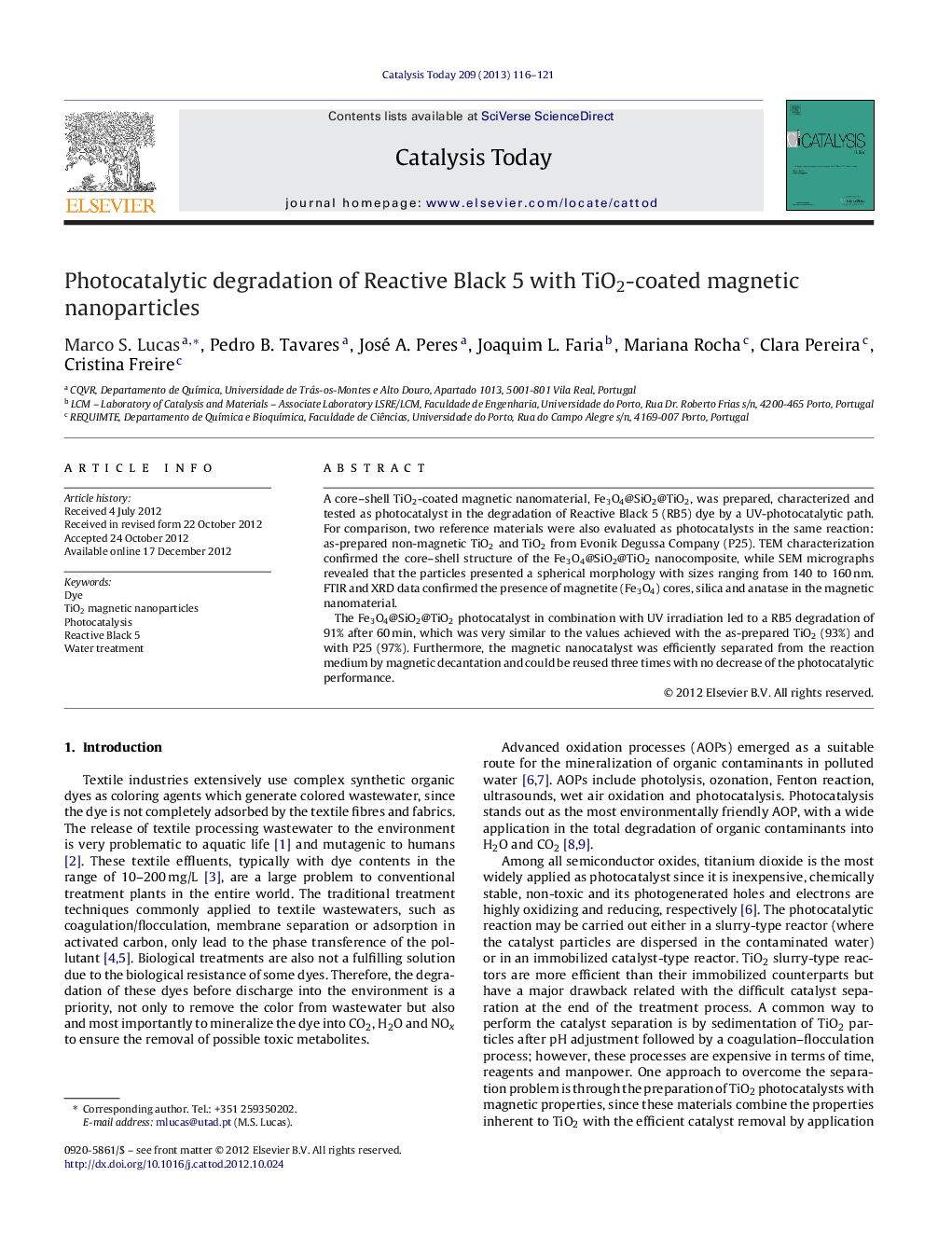| Article ID | Journal | Published Year | Pages | File Type |
|---|---|---|---|---|
| 55035 | Catalysis Today | 2013 | 6 Pages |
A core–shell TiO2-coated magnetic nanomaterial, Fe3O4@SiO2@TiO2, was prepared, characterized and tested as photocatalyst in the degradation of Reactive Black 5 (RB5) dye by a UV-photocatalytic path. For comparison, two reference materials were also evaluated as photocatalysts in the same reaction: as-prepared non-magnetic TiO2 and TiO2 from Evonik Degussa Company (P25). TEM characterization confirmed the core–shell structure of the Fe3O4@SiO2@TiO2 nanocomposite, while SEM micrographs revealed that the particles presented a spherical morphology with sizes ranging from 140 to 160 nm. FTIR and XRD data confirmed the presence of magnetite (Fe3O4) cores, silica and anatase in the magnetic nanomaterial.The Fe3O4@SiO2@TiO2 photocatalyst in combination with UV irradiation led to a RB5 degradation of 91% after 60 min, which was very similar to the values achieved with the as-prepared TiO2 (93%) and with P25 (97%). Furthermore, the magnetic nanocatalyst was efficiently separated from the reaction medium by magnetic decantation and could be reused three times with no decrease of the photocatalytic performance.
Graphical abstractFigure optionsDownload full-size imageDownload high-quality image (62 K)Download as PowerPoint slideHighlights► Synthesis of a core–shell TiO2-coated magnetic nanomaterial (Fe3O4@SiO2@TiO2). ► Degradation of Reactive Black 5 dye by a UV-photocatalytic path. ► Fe3O4@SiO2@TiO2 nanocatalyst was efficiently separated from the reaction medium. ► Fe3O4@SiO2@TiO2 nanocatalyst was reused three times with no decrease of the photocatalytic performance. ► Fe3O4@SiO2@TiO2 photocatalyst can be considered an effective alternative to the Degussa P25.
